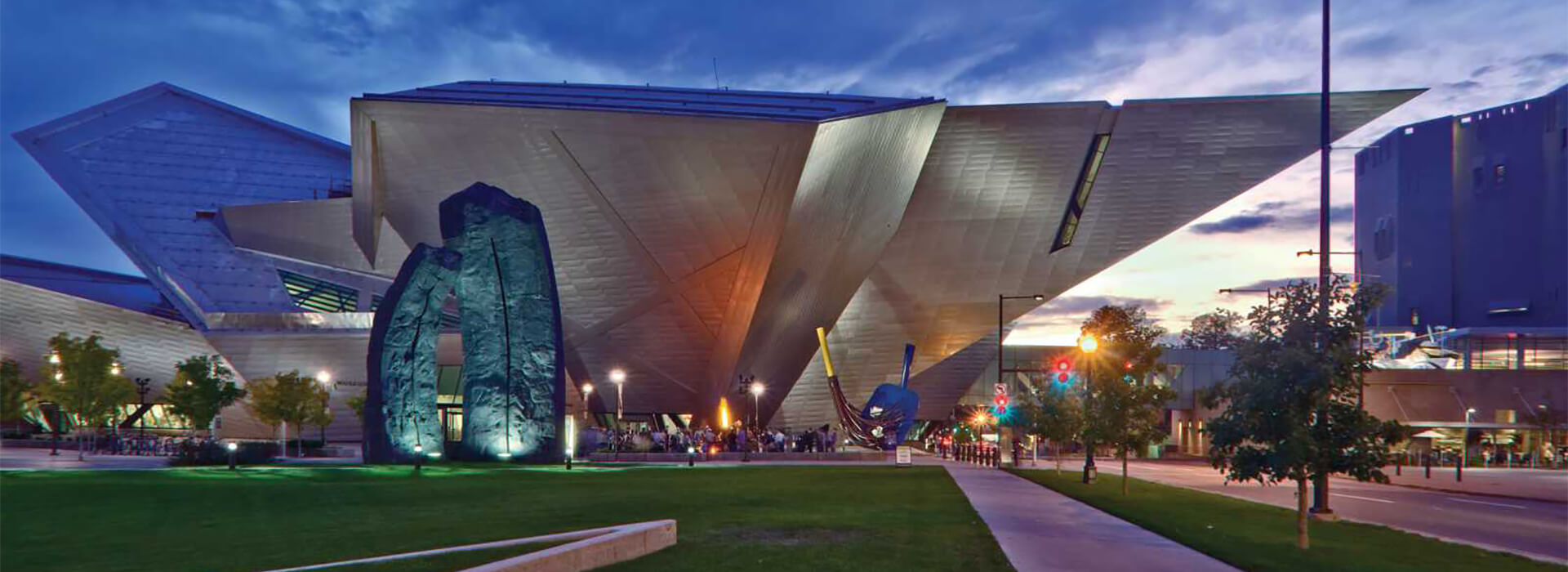Our Music, Movement, and Modernism series draws to a close tomorrow. We’ve explored Clyfford Still’s work from a variety of viewpoints. We want to not only engage the public in a discussion of Clyfford Still’s work—exploring existing history and research—but also invite new ideas and connections, while creating new content that responds to Clyfford Still’s powerful work. Comments about tension, accents, pregnant pauses and improvisation continually came up with the musicians in conversation in the galleries. We invited them to think about how they might respond to Clyfford Still’s work in the Museum, in writing or in music, for Still/Life.
After playing with FaceMan on the Museum’s forecourt on July 6, David Thomas Bailey proposed a locus composition and impromptu performance session inspired by the Museum’s architecture. Related to his work with The Locus Music Project, an initiative of the Colorado Composer Collective, the performance at the Museum included representatives from the bands invited to play at our two summer lawn concerts. (A performance of that composition can be seen in the video below.)
The Locus Music Project is an initiative of the Colorado Composer Collective. Members of the Collective write and perform new music inspired by iconic spaces in Denver. The project is intended to bring new art music to the community of Denver and present performances in unexpected places. Past performances have taken place at the Denver MCA, Confluence Park, and a moving piece across the Highlands Pedestrian Bridge. The most recent commission is for a short piece composed for the Brass Tree House performance space in the Baker neighborhood.
We invited David to share some of his thoughts about his visit to the Museum and the resulting composition:
The Clyfford Still Museum is a simple, elegant structure that stands in stark contrast to the crazy angles of the Denver Art Museum. Modern and efficient would be words I would use to describe this building. Cold concrete with natural wood. This cultural element is also new to Denver, so to our community…here is a stranger. But something like Clyfford Still’s bold vision, it is becoming more and more of a treasure in this once baron creative landscape. So I wrote this piece in the minimalist style, to compliment the straight lines and concrete of the Museum building. There are several repeating vamps in the music that slowly develop.
Looking at the collection and reading about Clyfford Still, I also felt a tension. Where on the one hand, the man sought to break with tradition, he also liked to keep his work controlled and complete. To bring this into the music, there is a battle between two themes: one in B-flat Major and one in G Major. They are both nice keys, but are difficult bedfellows and need to take turns.
And finally, the musicians who will play this are all fantastic, accomplished people in all different musical fields. To me, the G Major theme sounds like something we would hear in old time music, like a fiddle tune in a way. The B-flat theme is angular and uses chord extensions to be more like a jazz melody. Hopefully the musicians feel my respect and admiration for their skill and artistry in these themes.
We want to thank the musicians who performed in this piece: David Thomas Bailey (from FaceMan), guitar; Kyle James Hauser, banjo; Grant Gordy (from Grant Gordy Quartet), guitar; and Danny Meyer (from Grant Gordy Quartet) on saxophone. Special thanks to Enrique Jimenez for filming.
Join us tomorrow, Friday, August 6, at 5:30 p.m. for our final lawn concert at the season featuring Grant Gordy Quartet with Kyle James Hauser.
